Dr. Gholdy Muhammad on Finding and Nurturing Joy in Education
Key Points
-
Cultivating Genius’ and ‘Unearthing Joy,’ provide both theoretical frameworks and practical applications for educators seeking to implement equity-focused teaching strategies.
-
Joy within our curriculums is something educators and students alike need to strive for.
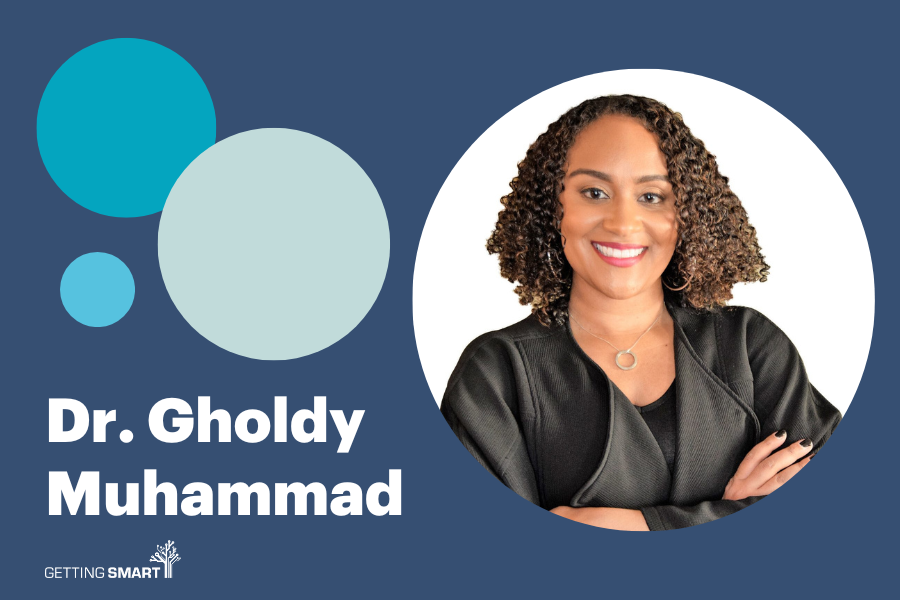
This episode of the Getting Smart Podcast is sponsored by Mrs. Wordsmith, learn more at mrswordsmith.com and save 15% on your order by entering discount code GETTINGSMART15 at checkout
On this episode of the Getting Smart Podcast, Shawnee Caruthers is joined by Dr. Gholnecsar Muhammad. You might know her as Gholdy, Dr. Muhammad is an associate professor of curriculum and instruction at the University of Illinois Chicago. She is the author of the essential 2020 book “Cultivating Genius: An Equity Framework for Culturally and Historically Responsive Literacy,” and the 2023 book, “Unearthing Joy: A Guide to Culturally and Historically Responsive Curriculum and Instruction.”
In this conversation, Dr. Muhammad emphasized the critical role joy plays in academic success and belonging, advocating for joy to be embedded in the curriculum. According to Dr. Muhammad, educators must create joyful, safe, and inclusive environments that honor students’ identities and promote critical thinking and self-expression.
She stressed that educators need to be ideologically prepared and anti-oppressive, ensuring that the curriculum and school environment reflect joy and justice. This transformation requires intentional effort, from hiring practices to classroom decor and pedagogy. Dr. Muhammad called for systemic changes, including policy reforms and culturally responsive teaching standards, to genuinely incorporate joy into education. She concluded by urging educators to embody and practice the principles of joy and justice they teach, promising students an education that nurtures their identity, intellect, criticality, and joy.
Transcript
- Introduction to Joy in Education
- The Power of Poetry and Freedom
- Implementing Joy in the Curriculum
- Links and Author Info
Introduction to Joy in Education
Shawnee Caruthers: During a recent school visit, in a school that some would deem untraditional, students were asked about the type of student that wouldn’t thrive in their space. One student said, “this is a weird school. At any moment, a musical number can break out in the hallway or karaoke can happen. To really love it here, you have to be okay with being all of you.” What she was describing was joy.
I’ve been thinking a lot about joy, and specifically how joy shows up or doesn’t show up in learning spaces. In this age of black boy joy and black girl magic, joy is no longer a feeling that’s reserved for non-school time. We have come to understand that when we lean into joy, belonging, identity, and engagement, our academic success is exponentially increased. As we continue to take bold steps to invite students into work that matters and co-create the pathways to help them determine their next best step, it’s critical that joy is a part of the equation.
A leading advocate for radical belonging and joyful practice is the wonderful Dr. Gholnecsar Muhammad. You might know her as Gholdy.
Dr. Muhammad is an Associate Professor of Curriculum and Instruction at the University of Illinois Chicago. She is the author of the essential 2020 book, Cultivating Genius, An Equity Framework for Culturally and Historically Responsive Literacy, and the 2023 book, Unearthing Joy, A Guide to Culturally and Historically Responsive Curriculum and Instruction. You’ve written two really important books, Gholdy. One is the framework and the other is a practical application. Your most recent book, Unearthing Joy, is not only linguistically beautiful but also visually stunning. I just could not stop looking at it. Your approach, the layers of songs and the intentional pauses to reflect through discussion and coloring allow anyone to thoughtfully engage with your work. So firstly, I just want to say, thank you. And welcome.
Dr. Gholdy Muhammad: Thank you, it’s such a joy to be with you again and discuss this work together.
Shawnee Caruthers: And speaking of work, you really acknowledge a lot of great authors and poets in your book, Unearthing Joy. One of them was Langston Hughes. And one of the poems that really stood out to me was Freedom. So if you don’t mind, I just want to say it for our listeners. And then I want to get your reaction. I really want to understand why you included it and why that was important.
The Power of Poetry and Freedom
Freedom by Langston Hughes:
Freedom will not come
Today, this year, nor ever
Through compromise and fear.
I have as much right
As the other fellow has to stand
On my two feet
And own the land.
I tire so of hearing people say,
Let things take their course.
Tomorrow is another day.
I do not need my freedom when I’m dead.
I cannot live on tomorrow’s bread.
Freedom
Is a strong seed
Planted
In a great need.
I live here, too.
I want my freedom
Just as you.
Dr. Gholdy Muhammad: Oh, every time I hear it, thanks for resharing that, and every time I hear it, it’s just so powerful. And it has, meaning for so many different eras that we’ve lived in, that we’ve read about that our current state, today as well, well, first of all, I feel that poets and artists have a way of helping us to conceptualize and understand very complicated and complex topics like freedom. Freedom is something that is very multi-layered, very complex, and it can be misunderstood. I feel like we could read about freedom in academic journals and books all day long, but sometimes it’s the artists, it’s the poets that really help us to hone in on it in a clear, concise, meaningful way. This book sends the message that artists can help guide us, to teach us. Poetry can teach us pedagogy. Poetry can teach us ideology. You know, I follow the poetic musings of Langston Hughes, I always have throughout my life, and he has such a wealth and a collection of writings, that help us to understand and navigate different walks of life and different moments. That was the reason why I included this poem, on freedom, you can’t really understand joy unless you understand freedom, the need for it, the desire for it, the history of it. You can’t really understand joy unless you really and truly understand liberation, again, the need for it, the history of it. When I hear you read that poem again, the one line that really stands out is, I don’t need my freedom when I’m dead, You know, that’s powerful like we are in a moment right now where we’re seeing countless innocent people and innocent children being murdered and Everything he says speaks to that. The part about land, the part about liberation, the part about not needing my freedom when I’m no longer here. I need it now. The urgency of it. When I relate that to education, it’s the same urgency. We don’t need better, textbooks when the children are no longer with us. We don’t need better standards, assessments, or pedagogical methods, like 20 years, 30, 40 years from now. We need it now. I was trying to really speak to that urgency, the necessity of his words, as it relates to freedom in society and of course, freedom in schools.
Shawnee Caruthers: It’s the urgency that really is very top of mind for me. Because like you said, students don’t have time to wait to be free. I’m just relating that freedom also to the privilege of feeling free and the privilege of being able to access joy. Then also think about how maybe we shouldn’t be satisfied with progress, but we should really be focusing on transformation.
Implementing Joy in the Curriculum
So if education is truly transformed into a space that allows students to freedom dream a space where they feel like they can walk in that joy, what does that look like?
Dr. Gholdy Muhammad: Society is often a reflection of our schools. Our schools reflect society, right? We need to make sure that the adults, the people who are allowed within that educational space, are ready and prepared in terms of their hearts.
The condition of their hearts has to be a certain way in order to teach them and lead them and interact with them, you know? So this idea of what is the condition of one’s heart? Needs to be assessed before they’re hired, we have to make sure that, in terms of ideology, these educators, understand anti-racism, they implement and lead and teach with anti-oppression, identity, and all these things.
If not, putting in front of our children. We also know for students to be able to, walk about the school, in joy, It is the whole environment. It’s the climate. What’s on the walls? It’s the energy of the space. It is the pedagogy that elicits joy and justice where children can see themselves, not just in the adults, but they should be able to see themselves in the curriculum that they learn.
It is the freedom to dream, like being in a space where I am not afraid, where I feel safe, where I don’t feel like if I look or talk this way, these ideas, are going to be shunned. I’m going to get fired if I talk about racism or white supremacy. As a student, I can’t freely share my ideas around the world.
I’m going to be punished, suspended. That is what joy, is. when we eliminate that kind of space that’s not free and not feeling safe, joy can enter. Joy cannot enter when you have feelings. Of, being unsafe and we can look at what’s happening in the world right now. We say that students should have a voice, students should speak up, students should fight for a better world, and we will not stifle their voices, but the moment they protest against genocide, for divestment and all these things—they’re punished. They’re punished for having a voice, for making the world a better place, for speaking up. All the things that the universities and the institutions say that this is the kind of student we want to produce, and when they show up that way. immediately they’re punished, they’re arrested, they’re kicked out of school
So if we’re really being honest about joy, we have to be honest about anti-oppression and safety and wellness and healing and sort of creating spaces—from who we hire, the energy of the space, the spirit of the space—that really honors these ideals. Then we’ll see it honored hopefully in the curriculum and the assessments and the policies and the books that we tell children that they have to read.
Everything from the learning experience needs to promote these ideas of joy.
Shawnee Caruthers: I just want to pause for when you said, what is the condition of one’s heart.
Like, that’s our next podcast where we’ll dig into that because that is so important to really understand and discuss. But I also, as you were talking, just really thinking about what does joy look like, and you know it when you see it.
I know that you’re very familiar with Art in Motion in Chicago and Cara May. I really want to amplify that work because that is joy, really exhibited every single day as soon as you walk into the space. You know when there has been an intentional culture created, like you said, from the adults to the students, and you know what that feels like.
But when you say that it also has to be folded back into the curriculum, one of the quotes from your books was, How will my instruction build students’ skills for the content area? Encourage them to experience joy in their reading, writing, listening, and speaking.
Then can an educator intentionally build joy into their curriculum if it is not systemically built in for them?
Dr. Gholdy Muhammad: Well, teachers will take a text, an idea, a theme, a topic, and intentionally add an objective for skills, a standard. So let’s say, a teacher just has a book in front of them. I’m asking the teacher, how would you intentionally put skills in this?
Teachers might automatically say, okay, students will learn how to cite textual evidence. Instantly they’ll say they’ll learn how to comprehend—that their mind will go to skills. I’m really. Asking teachers to do the same thing for joy. Take that same curriculum, textbook, book or text, and ask, how will this learning experience, whether the unit plan is one week or six weeks, help to elevate my student’s understanding of beauty within themselves, the world around them, or wellness, healing?
Laughter, wonder, happiness, benefits in the world, you know, what’s good in the world. You can go on and on. What I’m doing, I’m really just reading definitions of joy. You should be able to answer that. When you teach joy, right, with the other pursuits. It becomes quite easy if you’re just asking, how can I bring joy into this?
And you didn’t think about identity skills, intellect, or criticality. Joy also comes. in the materials we teach with? What are the texts that elicit joy? What are the methods?
What are students doing in collaboration in small groups with the community?
What are the methods? to incite joy, right? Then, you know, it also comes in the environment. As soon as they walk in, have you created a simulated joyful, classroom experience? As soon as they walk in, who’s on the walls? Is it clean? Is it colorful? Does it feel like a space of safety? That’s what the environment in classrooms should look and feel like.
Shawnee Caruthers: not just sometimes, every day.
Dr. Gholdy Muhammad: Yeah, every day, why do we wait to the end of the year for all the joyful things? It’s partly because teachers just feel such a constraint. And a pressure to teach toward the test Throughout the school year that they feel like once the test is over now real learning can happen and real joy can happen it’s so backwards when we think like that
Shawnee Caruthers: So as you think of all of these components and joy, What promise should we, as the adults, as the educators and ed leaders, ultimately be making to students?
Dr. Gholdy Muhammad: We should be promising to practice the same pursuits we’re teaching.
The schools, institutions, policies, and assessments, are, always going to be better when you have major political forces that are fighting to eliminate, justice and joy in the curriculum.
But, when we think about the teacher metaphorically as the one who’s providing the water to the growth of the children, there are things that we indeed can promise, that are within our wheelhouse or our control.
One of those is promising to teach the five pursuits. I promise to help you understand yourself, your identity, to teach the standards through skills, to teach you new knowledge, set into action, which is intellect, to teach you about joy in the world and to teach you, about justice in the world, we can make that promise. Then we can promise. to embody and live out those same pursuits in our own lives and do our self-work. We can promise that when the assessments, when the curriculum, when the standards are not enough, we will adapt them and make them better. We can promise to put Beautiful, wonderful intellectual learning experiences in front of children, the best books. We can promise to be the brightest and the most conscious and best in front of them because they deserve the best teacher.
And we can promise to do the self-work to make ourselves the brightest and the best to put in front of them. I used to teach. Children every summer and I wanted them to know that It’s not just anybody I am doing the work.
This is my background. This is what I spend my life’s work doing I read I try to work every day to make my Pedagogy better for you my curriculum better for You that’s the kind of teacher they deserve.
Shawnee Caruthers: One of my favorite lines from your book Unearthing Joy is I like to believe that we often become our names. Your name, Gholnecsar, means sharing flowers. So beautiful. One of the first recognizable moments of joy for a child is when they learn their name and one of the first points of pain. Especially in the black and brown community. is when people don’t take the time to get it right because we know how that feels. How does this very early educational experience diminish joy? And what is the academic impact?
Dr. Gholdy Muhammad: Sometimes the impact of how people dismiss our names is not felt understood or articulated until we’re much older. I know it didn’t feel good as a child, but the older I got, I was able to understand it, articulate it and put some more words to it, right? You have a lot of tradition, even in our last names, there’s a whole history around it, especially African Americans in the United States, our families, Our people, they pick our names somehow, given whatever’s happening in the state of the world or our lives.
That is culture. That’s tradition. It carries so much beautiful meaning. To dismiss a child’s name, how are you then going to teach them in culturally responsive ways? That’s the first step. How are you going to teach identity if you dismiss their name? How are you going to do any of this work?
I was reading a picture book. I always read picture books and write lesson plans and things like that. So I was reading a picture book yesterday and it’s about this white family, who travels to Vietnam to adopt new child and then changes her name to Rebecca. And I’m like, okay, I don’t like this. I just, I don’t like that. Not enough honor was given to this child’s birth name. We do not know why the parents had to give this child up. It just felt like such a dismissal and ownership over this child. I’m always curious because that’s a way of getting to know our children. And if you do not know them, you cannot teach them.
Shawnee Caruthers: Yeah, totally agree and, you know I’m glad you articulated it the way that you did because some might be wondering, why are they talking about names? But the way that you explained it, just like the importance of cementing their identity and making them feel seen is the first step of getting that right and not being dismissive of all of the culture that’s happening so that they can step into their joy.
Dr. Gholdy Muhammad: Yeah, absolutely. That’s the goal. That’s the continuous striving. There’s certainly been enough scholarship, a lot of scholarship to guide us. Toward name stories and honoring. There have even been research studies about how people have been discriminated against based on their names, so what further evidence, do we need?
Shawnee Caruthers: Another thing you reference in your book is around the HRL framework. Can you share what that is and how that relates to this conversation?
Dr. Gholdy Muhammad: Yeah. In cultivating genius, the framework around my historical research around black literary societies, and black newspapers, I came to Basically five major goals that black people had in these spaces I named it as historically responsive because it’s responding to history in this beautiful guide as a beautiful roadmap to what we need to do in schools today.
And I honor it within the framework and within the researchers who have done. Culturally relevant and culturally responsive education, you know, folks like Gloria Lassing Billings, Geneva Gay and Django Paris and others. Because it honors those same beliefs, it builds upon those same beliefs, so historically responsive literacy or education was the teaching of identity, helping children to know who they are, who’s they are, who they desire to be teaching about diverse cultures in the world. The second, goal that they had was the skills goal, right?
Teaching the proficiencies, the competencies needed by different grade, what we call now grade levels, but also, by different disciplines like math and science and ELA, seeing, all disciplines as the humanities and not just ELA and social studies. The third is teaching intellectualism, teaching new knowledge set into action, teaching about new people, places, things, histories, making sure that when students leave that lesson plan, they just not learning how to solve for X and they’re learning the context of how to use that skill in the state of the world. That’s what intellect gives. And then number four is criticality. That’s teaching students how to name, understand, disrupt any form of oppression in the world, in yourself, in the environment. So that can be teaching about, pollution, littering, self doubt, it could be teaching about genocide, gentrification, anti racism, anti homophobia, religious discrimination, Islamophobia, you name it, anything that elicits harm. And then joy, right? Which I talk more about in the second book, but joy again is, is being able to recognize, and understand beauty, wonder, imagination, all these things.
Shawnee Caruthers: So, and I’m gonna reference your Stevie Wonder reference in your book, but in all of the things that you said, what needs to change so that students can move into a new way that’s waiting to be born?
Dr. Gholdy Muhammad: Yeah. So, and those lyrics again, are like another example, how an artist can help us understand humanity and education better, and that song was written by a black woman. I think we need policies for culturally responsive pedagogies. See, without policy and without this mandate to teach it, some people are going to create mandates to not be able to teach it, which we see without mandates to teach it, some people are going to teach in this way and some people won’t because they don’t have to. There’s no policy that says I have to we need it explicitly in the teacher evaluation. So most black and brown school districts, you know, like New York City schools and Chicago public schools, they use the Charlotte Danielson framework.
Why? That’s like my only question to them. Why? You’re using a framework that was written by a white woman who said that this is not for equity, for culturally responsiveness, and you use it in districts that have 85, 89 percent black and brown children. She’s telling you, you can read the work. There’s nothing about culturally responsive education there. And some people say, well, if you dig and dig and pull out this word and go, you shouldn’t, teachers should not have to imply it should be explicit, it should be literal. So we would need a different set, a different teacher evaluation connected to that pilot.
Then we need what I am pushing for are standards and pursuits to be taught. The standards are skills only right now, but what if we had wider standards around joy or pursuits around joy, criticality, identity, intellect? We can create language around that and then the hope is the assessments will match the pursuits and standards because if the standards are only skills, I’m only going to assess skills. So I would love to see as state, district, and school levels assessments for joy, assessments for identity, for criticality, for intellect. We will gather information through assessments. on what we value. And so the fact that since the inception of these very racist standardized tests, if you study the history of them, we’ve only assessed skills. And some of those skills have been problematic and not, not connected or aligned to history of black and brown people. in our skills.
So what I’m, I’m saying all this to say is that when the standards change, the assessments will change. And then, of course, I’m going to speak to a change in these publishing companies that produce textbooks and core curriculum need to do better. Period. It’s time for us to move beyond skill development. Stop being scared and afraid. Stop picking capitalism over humanity. And do the work. It takes action. I mean, we have the resources. We have the genius. We have the people to create it. What else do you need?
Shawnee Caruthers: Well folks, you heard it here first, in a month, We can change all.
Dr. Gholdy Muhammad: Yeah, I mean, listen, it’s not by chances that, you know, I was just speaking on seven, we’re at 70 years since Brown versus Bordovich.
It’s not by chance, oh my gosh, I cannot believe nothing has changed since Brown. I can’t believe nothing has really changed since the 1600s. If you look at Suwannee University, the University of the South in Tennessee, in their founding documents. It says we are creating this university with the explicit purpose of producing human beings who will go out and vote to continue slavery. So we must not be like, you know, people. Have been doing this and they’ve been creating institutions to keep it going. It’s not just enough to have us in leadership positions.
And that’s the disheartening part for me. You know, it doesn’t mean I lose all hope because I see the work. I see teachers and principals doing this despite of society and the system. And that gives me hope. just sometimes dream that, you know, it’s 2024, it’s going to be 2025. I dream that we would be in a much, you know, bigger space, like of getting this everywhere and not just in pockets of places.
Shawnee Caruthers: And I think that goes back to the progress versus transformation. And you’ve shared lots of great information. For us to consider and to continue to dig into and to learn for ourselves. You’ve also shared like a really strong framework on how to implement joy, not in a silo, but how truly it needs to be like interdisciplinary within the classrooms and the different systems. And one of the things you said, as we close out our conversation, joy is about beauty and wonder. So I’m wondering with you, Gholdy, what was the last beautiful thing you noticed, or what was the last thing that truly made you wonder?
Dr. Gholdy Muhammad Kara’s books store, they posted in Atlanta, they posted something like what happens when a flower grows unexpectedly. And like the next month I saw in my plants, like these flowers just growing unexpected, like these sunflowers.
And I’m like, what? I didn’t even know they were there.
Joy is all around us and we have to be open enough. Our hearts have to be open enough to recognize it, see it, name it, experience it.
Shawnee Caruthers: Yeah, well, I appreciate the conversation. Sometimes we don’t go the layer underneath. To get to the space where students can even get to that More academic space as we think about identity and joy and so really appreciate you sharing and having a conversation around this and reminding us that joy and wonder are everywhere and it is necessary that we continue to find it. So thank you, Gholdy.
Dr. Gholdy Muhammad: Yeah, no, thank you. And Thank you for being a part of my joy too, sis.
Dr. Gholnecsar Muhammad
Dr. Gholnecsar (Gholdy) Muhammad is an Associate Professor of Literacy, Language, and Culture. She studies Black historical excellence within educational communities with goals of reframing curriculum and instruction today. Dr. Muhammad’s scholarship has appeared in leading academic journals and books, including Research in the Teaching of English, Urban Education, Journal of Adolescent and Adult Literacy, Language Arts, and Written Communication. Some of her recognitions include the 2014 recipient of the National Council of Teachers of English, Promising New Researcher Award, the 2016 NCTE Janet Emig Award, the 2017 GSU Urban Education Research Award, the 2018 UIC College of Education Researcher of the Year, the 2020 American Educational Research Association (AERA), Division K Early Career Award and the 2021 NCTE Outstanding Elementary Educator in the English Language Arts. She has led a federal grant with the United States Department of Education to study culturally and historically responsive literacy in STEM classrooms.
Dr. Muhammad brings expertise, having served as a middle school teacher, literacy specialist, school district administrator, and school board president. She is the author of the best-selling book Cultivating Genius: An Equity Model for Culturally and Historically Responsive Literacy. She also co-authored the book, Black girls’ literacies: An Edited Volume, published by Routledge. She works with teachers, leaders, parents, and youth across the United States and South Africa in best practices in culturally and historically responsive and equitable instruction. Her Historically Responsive Literacy/Culturally & Historically Responsive Education Model has been adopted across U.S. school districts. In 2022 and 2023 she was named with the top 1% Edu-Scholar Public Influencers which recognizes the 200 university-based scholars who had the biggest influence on educational practice and policy.
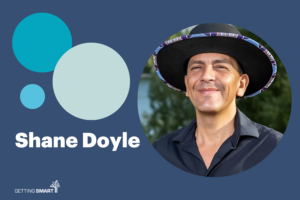

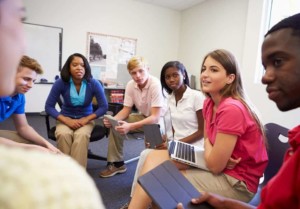
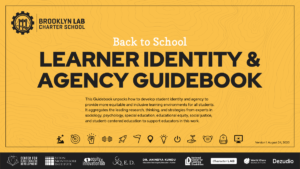
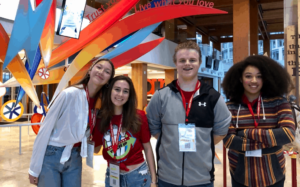
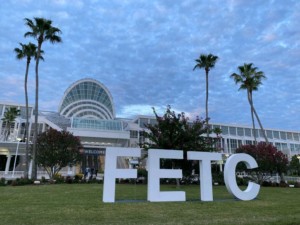
0 Comments
Leave a Comment
Your email address will not be published. All fields are required.